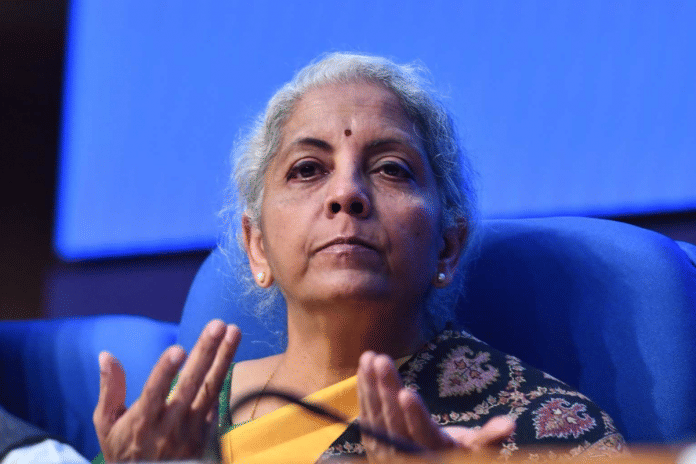Advancements in transportation and communication technologies have significantly transformed global development since the second half of the 20th century. These improvements have had a long-lasting impact, as evidenced by the research of Nobel Prize-winning economist Angus Maddison in his work, The World Economy: A Millennial Perspective. This duo of transportation and communication technology development facilitated what American economist Jeffrey Sachs refers to as the seven “ages of globalisation”.
Globalisation was borne by interconnectedness in the movement of trade, people, and information around the world. This led to the creation of specialised global value chains (GVCs). The World Bank’s World Development Report 2020 highlights that a 1 per cent increase in participation in GVCs is estimated to boost the per-capita income levels by more than 1 per cent, which is about twice as much in the case of conventional trade expansion. Thus, participation in GVCs can boost inclusive and sustainable growth, reduce poverty, and create sustainable employment opportunities with better pay and income.
Indian customs plays a crucial role in facilitating participation in global value chains.
Also read: Modi govt not leveraging its parliament strength for economic reforms. Using it for politics
The tripartite mandate
GVCs are dynamic arrangements that reorient themselves based on productivity, efficiency, and security. In the context of international trade, and specifically GVCs, the Indian customs has a tripartite mandate. First, the fiscal aspect of revenue collection; second, the economic aspect of oversight and implementation of the government’s broader economic vision and policy; and third, the security aspect of protecting citizens, society, economy, and environment from trans-boundary criminal activities. As a result, Indian customs is not only at the forefront but also a core element of India’s logistical framework, enabling the country to connect with GVCs and benefit from globalisation.
The logistical framework of India can be elevated to global standards by improving transportation and communication technologies. PM Gati Shakti, also known as the National Master Plan for Multi-modal Connectivity, and Digital India, which utilise digital communication infrastructure, are pivotal schemes that enable India to leapfrog into the category of developed countries. For instance, some Indian ports have reduced dwell time from about 30 days to three days, which is the same as that of Singapore, the world leader in this area. Similarly, the Out of Charge (OOC) clearances for goods in some ports are now issued within hours compared to weeks a few years earlier, contributing to greater infrastructure advancement.
The logistical infrastructure can be made seamless by adopting two principles. One, simplifying and harmonising international trade procedures, and two, cooperating with various other participant agencies. Indian customs is working round the clock to achieve both objectives in accordance with global standards. It has introduced facilities such as Turant Customs, the Authorised Economic Operator (AEO) scheme, Electronic Cash Ledger (ECL), and others to simplify procedures and improve efficiency.
The Indian customs has also implemented the Time Release Study (TRS) and collaborated with the World Customs Organisation (WCO) to enhance its effectiveness in the GVCs. Additionally, it has introduced the ICEGATE e-commerce portal to establish smooth partnerships with partner government agencies (PGA) and achieve seamless cooperation. This has facilitated the integration of system and transaction-based supervision, leading to a better balance between facilitation and enforcement.
Also read: WTO panel just ruled that India has violated global trade agreements. All about tariff…
Why Indian customs is crucial
The building of components of the Falcon 2000 jet by Dassault in India is an example of India’s participation in the GVCs. These components travel through three continents — Asia, Europe, and North America — and India plays a crucial role in this network. The Special Economic Zone (SEZ) in MIHAN, Nagpur, is where Dassault’s facility is based in India, and it is connected globally with other facilities located in Paris and Little Rock in Arkansas.
The performance of the logistical infrastructure is critical to increasing participation and performance in GVCs. In the World Bank’s recently released Logistics Performance Index (LPI) 2023, India is ranked 38 out of 139 countries. The LPI is based on six broad parameters — border management, transport infrastructure, international shipments, track and trace, and delivery time. It is clear that Indian customs plays a crucial role in all these parameters and can further improve India’s ranking and performance in logistical infrastructure.
Indian customs must focus on adopting advanced communication technologies to improve its capabilities. Among the numerous technologies available, the emphasis should be on three disruptive ones — blockchain and distributed ledger technologies, the Internet of Things (IoT), and advanced analytics technologies such as machine learning (ML). These technologies can provide not only diagnostic but also prescriptive analytics solutions for all the broad areas mentioned in the LPI 2023.
Additionally, Indian customs officers must receive regular training and exposure to the work culture and best practices of other countries’ customs departments since they are part of an international system. Similarly, other governmental departments such as Railways, roadways, shipping, India Post, and others must work together to overcome silos-based working models and adopt a nation-first and citizen-first approach to achieve “Viksit Bharat” as proposed by Prime Minister Narendra Modi on Civil Services Day 2023. The adoption of modern HR and work practices, such as scrum and agile methodology, is also crucial for improving performance in government departments.
Indian customs is taking steps towards building a more conducive environment for commerce by focusing on facilitating ease of doing business and trade, while also ensuring tax collection and border security. The customs ecosystem is connecting India to the GVCs even in the era of “slowbalisation”. The LPI 2023 states that the improvement in India’s ranking is primarily due to modernisation and digitalisation, within which Indian customs remains a frontrunner.
Avinash Pandey is an IRS Officer working as Assistant Commissioner of Customs. He tweets @avipandey_. Views are personal.






